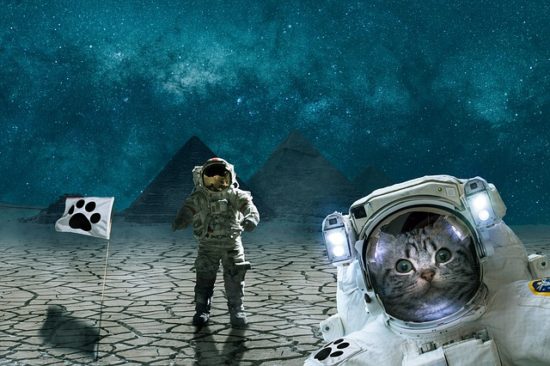We have all heard about Laika, a dog that, in 1957, became the first Earthly creature to orbit our planet. When people were preparing to send her to space, they didn’t know what it would do to her. They didn’t have answers to some basic questions, for example, how the blood, organs, and tissues would behave without gravity; would digestion still be possible? These are only some of the doubts scientists had back then, when they were preparing Laika for her trip.
As it turned out, Sputnik 2 was only designed for a one-way trip, and Laika never came back. And she wasn’t the last animal to be sent to space (though some of them survived). Although they significantly contributed to the development of space programs, a lot of people argue that it’s unethical, as animals are unable to verbalize their needs, problems, and desires.
Animals rights activists are growing in numbers these days, and their voices become louder. More and more people decide to give up eating meat or dairy products, or using cosmetics that have been tested on animals. So what about those being sent to space? Should humanity continue to do so in the name of progress and space exploration?
Why do people send animals to space?
According to NASA, many more people would have died if it hadn’t been for animals that provided us with a lot of necessary information. To this day, animals are being sent to space when there’s a need for additional data. Some things can be studied thanks to the astronauts aboard the Space Shuttle or International Space Station, but not everything, as these people have tons of other responsibilities. So they use, for example, a rat to study its reactions in space. Then, they can transfer the data to human models and predict the outcome.
Scientists are interested in how microgravity affects living organisms. Researchers themselves prefer studying people who are already in space or use computer models, but there are still situations when it seems absolutely necessary to observe another living thing. For example, with animals, it’s much easier to control their diet, as their feedings are always monitored (you can read so much about pets and their diet on this website.)
Laika showed people that they could survive in space physically, despite weightlessness, if the right conditions could be maintained. Experiments with snails helped understand how the inner ear will react to the change of conditions, while fish took part in genetic space studies. The results weren’t possible to be transferred one-to-one to humans, but the basics were necessary to develop precautions.

What are some of the animals sent to space?
Apart from Laika, many other animals were sent to space, and some even became quite famous.
- Fruit flies
Being sent to space in 1947, fruit flies were actually the first to experience it. Scientists wanted to check how the human body would behave there. Apparently, around three-quarters of human disease genes are similar to those of a fruit fly, which may be enough to collect relevant data. NASA still sends fruit flies to space to have a better understanding of biology outside the Earth.
- Monkeys
NASA started sending monkeys to space in 1948. The first was called Albert, and he was the first in the project and followed by other Alberts, but he suffocated during the flight. Albert II survived the flight but died on the impact. Five Alberts were sent to space in total, and they all died. The first to survive the whole trip was Yorick, but he died a couple of hours after his return.
Then, in 1959, a monkey called Miss Baker survived the trip and continued to live until 1984.
The US, Russia, and European countries haven’t been sending monkeys to space since the 1990s.
- Mice
The first mouse was sent to space in 1950 and died on the impact. NASA and other space agencies continue to do so. NASA found that mice are incredibly quick to adapt; after only several minutes, they are able to carry on their typical behaviors in the weightless environment.
- Soviet dogs
More dogs followed Laika to space. In 1960, Belka and Strelka reached orbit and returned safely to Earth, while Veterok and Ugolyok, spent 22 days in space in 1966 and still hold the record for the longest time spent in space by a canine.
- Ham
Being sent in 1961, Ham became the first chimpanzee in space. He returned safely and in good shape and continued to live his life in a zoo. He died in 1983.
- Félicette
She was the first and only cat ever sent to space, and she returned safely. Others were trained, but experienced more difficulties or… run away.
Should people continue to send animals to space?
It’s hard to provide the world with an unambiguous answer. It might be true that none animal would choose this life for themselves if they had a choice. Experts of the NASA Ames Institutional Animal Care and Use Committee claim that animals are very quick to adapt. They don’t get confused by microgravity. Apart from that, it’s not like people are sending animals on suicide missions as they did with Laika all these years ago. Now animals seem to be just as safe as humans are in space, and the Institutional Animal Care and Use Committee take care of providing them with the best possible conditions. The regulations are more strict in the case of animals right now, as they can’t give their formal consent, unlike humans. You can never be sure, but it may be a chance for a better life to many animals that are now suffering on a daily basis because they are being hunted or they are living on the streets.
Leave a Reply